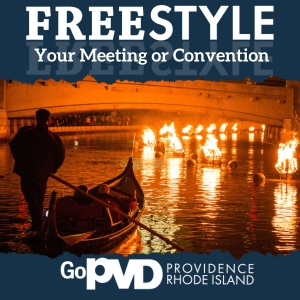Coincidentally, the pencil I grabbed to draft my outline for this article conveniently reads, “Create your future. Earn your CAE.” The fact that I grabbed a pencil for this clearly indicates a preference to old-school ways. Despite them, I remain eager to stay on top of industry trends and best practices. Maintaining my CAE is one way of accomplishing this goal.
I am fortunate to work for an AMC that heavily supports its employees to pursue professional certifications. The comradery and pride among staff who are working towards the goal of a certification (CAE, CMP or another) is palatable. Cultivating this sense of togetherness is one reason to encourage your team members to pursue professional certifications.
Pursuing a certification is an excellent opportunity to encourage mentorship within your AMC. The learning process that takes place prior to a certification exam is an experience that cannot be matched by taking a course. It is a great equalizer, allowing junior staff to have an opportunity to mentor veteran staff as well. And staff that have recently taken the exam are able to share their knowledge of the process and content. It is common knowledge that one of the best ways to learn material is to teach it. Individuals that may not work closely together within your AMC structure are brought together by working to achieve a common goal and those individuals become future sounding boards.
Of course, having staff that are certified in their specialties will serve as a value-added or recruitment tool for new clients. The broad knowledge and deep understanding that is needed to obtain certification enhances your overall product and service offerings. Having a team that has pursued the highest level of knowledge in their position demonstrates a commitment to excellence, professionalism and continued learning. When considering different AMCs, a potential client can use professional certifications as a metric, especially if the client’s industry takes particular value in them, too.
Supporting staff in their pursuit of professional development goals is a key factor in employee retention. Employees across generations have demonstrated interest in continuing to advance their education and it is especially important for Millennials and Gen X employees. Creating a professional development plan for your team members produces security, purpose, and provides them with a goal. Reminding your employees to be aware that the certification journey is just as important as the destination enables customization for these plans that can be accomplished on a timeline set by both the employee and AMC. Racing through the certification process will not afford the same outcome as taking time to deliberately select the appropriate programs to prepare someone for the exam. It’s critical to ensure the information is retained and used practically. Supporting certification is an investment at the beginning of the process, but the support for continuing education to maintain certifications must to continue to really enable the employee, team, and clients to benefit.
I studied for the CAE as a brand new Executive Director and it was an excellent guide to the position. Not the designation itself, but the learning process. Of course, now having the CAE provides me a level of confidence in my knowledge and experience. I am grateful for the CAEs I have within our team that I can turn to for discussion on industry best practices when my client faces a challenge. So, as my pencil says, through earning and maintaining my CAE I am continually creating the future I desire within association management. Supporting your employees’ goals of earning a professional certification will similarly guide the future of your AMC.


